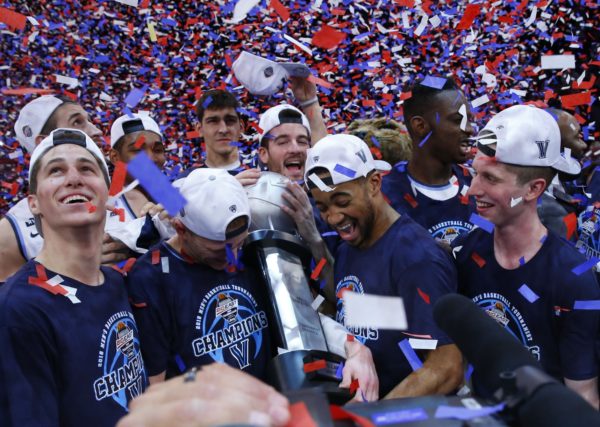NCAA Tournament Instareaction: Big East Teams
Posted by Justin Kundrat on March 11th, 2018Below is a review of how the selection process concluded for each Big East team and what they should expect in the first few rounds of the NCAA Tournament.
- Villanova, #1 seed, East Region. Assuming the Wildcats knock off the #16 seed play-in-game winner between LIU and Radford, they will face the winner of Virginia Tech and Alabama in the Second Round. The Hokies are an extremely rim-focused offense (ranking fourth nationally in percentage of shots at the rim) so the onus would be on Villanova’s wings to contain the penetration of Justin Robinson and his teammates. Alabama is a similarly constructed, penetration-focused offense without the commensurate complement of shooters. They instead rely on a ball-hawking defense supported by long, athletic wings. Villanova would probably prefer Virginia Tech here.
- Xavier, #1 seed, West Region. The Musketeers earned the committee’s respect with a #1 seed in the West Region, and barring catastrophe, will face the winner of Missouri and Florida State next weekend. Stylistically, those two teams couldn’t be more different. Florida State pushes the tempo at every opportunity, particularly off of defensive rebounds and blocked shots. Missouri plays a half-court focused offense that picks apart defenses with relentless three-point shooting. The Musketeers would be happy to play at a fast tempo against the Seminoles despite their athleticism on the perimeter. Xavier has struggled this season in preventing perimeter shooting (see: Villanova), so a Missouri team with Michael Porter getting back to full health might pose some problems.
- Seton Hall, #8 seed, Midwest Region. Seton Hall has a pretty good match-up here against NC State, something the Pirates haven’t been able to claim over the last few seasons. The Wolfpack are a horrendous defensive rebounding team and their defense is instead oriented around limiting three-point shot attempts, something Seton Hall does not prioritize. So it figures that Angel Delgado will have a field day against a soft interior defense that allows the nation’s sixth-highest frequency of shots at the rim. On the other end, the key will be limiting the shooting production of wing Allerik Freeman; Ish Sanogo’s health will be vital in that regard.
- Creighton, #8 seed, South Region. Creighton’s efficient and fast-paced offense draws a slow and methodical defense in Kansas State. The Wildcats’ average defensive possession length is 18.3 seconds (323rd nationally) and they generally do a good job of keeping teams out of transition. But on the offensive end, this team is not the type to capitalize on Creighton’s interior deficiencies, ranking 233rd nationally in shots coming at the rim. The key will come down to whether Creighton’s big men can contain 6’10” Dean Wade (16.5 PPG) and whether Kansas State’s athletic backcourt can stop the dribble penetration of Marcus Foster and Khyri Thomas.
- Providence, #10 seed, West Region. The Friars didn’t climb the seed line as much as some expected following their overtime-fueled run in the Big East tournament. They will draw a defensive-focused team in Texas A&M with a sizable front line that features three 6’10” big men. This will certainly limit the effectiveness of Ed Cooley‘s offense given his focus on generating points around the rim and at the line. On the other end, the Aggies generate the majority of their points at the rim, an area that Providence has struggled in defensively. Kyron Cartwright will be relied upon heavily to keep the offense humming.
- Butler, #10 seed, East Region. Butler draws a difficult matchup in Arkansas and will likely face the same struggles that Seton Hall did last season. Butler doesn’t get to the line enough to exploit the foul-prone tendencies of the Razorbacks’ defense and they will likely struggle to score in the paint against 6’11” Daniel Gafford. The hope is that Kelan Martin and Kamar Baldwin are able to capitalize on a somewhat undersized backcourt while minimizing turnovers so that Arkansas cannot get out into transition.











































